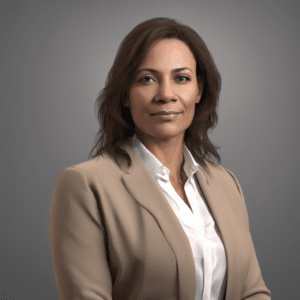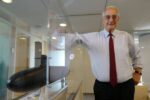The revolution of satellite communication is accelerating.A major player joins an international consortium.Sivers Semiconductors takes a decisive step.
With the arrival of Sivers Semiconductors in the DIFI Consortium, the satellite and terrestrial systems industry finds itself at a turning point. This partnership promises to significantly enhance the interoperability of networks through cutting-edge photonics and wireless technologies. By integrating its advanced RF and optical solutions, Sivers contributes to the necessary standardization for next-generation connectivity. Experts in the consortium warmly welcome this collaboration, highlighting Sivers’ key role in the development of mmWave and 5G systems. This initiative aligns with Sivers’ vision to accelerate innovation and strengthen the competitiveness of the space sector. With over twenty years of experience, the company is well-positioned to influence the future technical directions of the consortium.

In the constantly evolving landscape of space technologies, Sivers Semiconductors stands out once again by joining the Digital Intermediate Frequency (DIFI) Consortium. This move is part of a global initiative aimed at strengthening the interoperability of satellite networks, a crucial step for the future of space communications.
Table des matières
ToggleWhat is the DIFI Consortium and what is its main objective?
The DIFI Consortium is a collaborative initiative that brings together industry leaders to establish open standards based on established benchmarks for digital IF and RF systems. The main objective of this consortium is to facilitate increased interoperability between satellite and terrestrial systems, paving the way for a faster digital transformation of satellite communications. By joining this consortium, Sivers Semiconductors secures a prominent place within a community dedicated to innovation and standardization of space communication technologies.
How does Sivers Semiconductors’ participation strengthen the DIFI Consortium?
With over two decades of expertise in mmWave and RF solutions for satellite communications and advanced 5G systems, Sivers Semiconductors makes a significant contribution to the consortium’s technical initiatives. The company is recognized for its integrated circuits, optical solutions, and millimeter wave technologies that meet the needs of the aerospace, defense, and satellite markets. Vickram Vathulya, CEO of Sivers Semiconductors, stated: “We are proud to become a member of the DIFI consortium and to contribute to shaping the future of satellite communications.”
What are the benefits of interoperability for satellite networks?
Interoperability enables smooth and efficient communication between different satellite and terrestrial systems, thereby reducing costs and increasing the reliability of communications. By adopting open standards, companies can develop more flexible and scalable solutions, facilitating the integration of new technologies. This is particularly relevant in the current context where the demand for next-generation connectivity solutions continues to grow, both in the civil and military sectors.
What are the future goals of Sivers Semiconductors within the consortium?
By joining the DIFI Consortium, Sivers Semiconductors aims to accelerate innovation and standardization within the space communications ecosystem. Harish Krishnaswamy, General Manager of the Wireless Division at Sivers Semiconductors, added: “Open standards are essential for unlocking scalable and interoperable solutions. We are excited to collaborate with other industry leaders to shape the next generation of space-based connectivity.”
How do Sivers Semiconductors’ technologies meet market demands?
The millimeter wave (mmWave) and RF solutions developed by Sivers Semiconductors are designed to meet the rigorous demands of SATCOM, defense, telecommunications, and 5G infrastructure markets. These technologies are distinguished by their superior reliability, performance, and energy efficiency, enabling customers to accelerate development, streamline deployment, and gain a competitive edge.
What is the importance of interoperability in the current context of space technologies?
With the rapid increase in the number of satellites in orbit and the diversification of space applications, interoperability becomes essential to ensure harmonious communication and avoid interference. Sivers Semiconductors‘s membership in the DIFI consortium highlights the company’s commitment to supporting robust and integrated communication infrastructures that can meet the complex challenges of modern space.
What are the other areas of innovation for Sivers Semiconductors?
In addition to its contributions to the space domain, Sivers Semiconductors is also involved in areas such as air security and advanced defense technologies. For example, recent studies show how technology is transforming air security, a sector where Sivers’ advanced solutions play a crucial role. Furthermore, the increasing collaboration between countries like Turkey and Indonesia in the field of armaments, notably with the development of new troop transports, illustrates the importance of interoperable technologies and open standards.
How does Sivers Semiconductors contribute to aeronautical innovation?
Aeronautical innovations play a decisive role in transforming our skies, and Sivers Semiconductors is at the forefront of this technological revolution. By integrating advanced RF solutions, the company helps develop more effective and reliable communication systems, essential for navigation and air safety. To learn more about the impact of aeronautical innovations, check out this article.
What is the impact of interoperability on international armed forces?
The interoperability of artillery systems allows for more effective coordination between different armies, thus enhancing their ability to respond to threats in a unified manner. American artillery officials actively encourage European armies to interconnect their artillery systems, an initiative facilitated by open standards like those promoted by the DIFI consortium.
How are the Iranian armed forces innovating in defense?
Facing complex security challenges, the Iranian armed forces are developing defense technologies of unprecedented complexity. According to a military official, these innovations include advanced communication and surveillance systems, supported by cutting-edge RF technologies. These developments underscore the importance of enhanced interoperability to ensure effective and coordinated defense globally.
What are the benefits for Sivers Semiconductors’ customers from these initiatives?
Customers of Sivers Semiconductors directly benefit from advances in interoperability and standardization of RF and mmWave technologies. This translates into more robust solutions, reduced integration costs, and improved overall performance of communication systems. By engaging in global initiatives like the DIFI consortium, Sivers ensures its customers access to the latest innovations and increased compatibility with emerging technologies.
How does Sivers Semiconductors adapt to future challenges in the space sector?
Anticipating rapid changes in the space sector, Sivers Semiconductors continuously invests in research and development to remain at the forefront of communication technologies. Commitment within the DIFI consortium is a key strategy to anticipate and address future needs for interoperability and connectivity. Through this proactive approach, Sivers is well-positioned to continue offering innovative and efficient solutions in an increasingly complex and demanding space environment.
What is the status of the development of open standards in space communications?
The development of open standards is essential to ensure harmonious communication between different platforms and satellite systems. The DIFI consortium plays a central role in this evolution by facilitating collaboration among key industry players. With the involvement of leaders like Sivers Semiconductors, open standards are progressing rapidly, providing a solid foundation for future innovation and interoperability of satellite networks.
What are the strategic partnerships of Sivers Semiconductors in the space domain?
In addition to its commitment to the DIFI consortium, Sivers Semiconductors maintains strategic partnerships with other industry leaders in space and communication technologies. These collaborations enable resource and expertise sharing, accelerating the development of innovative solutions and strengthening Sivers’ position in the global space technology market. These partnerships are essential to meet complex challenges and continue to offer cutting-edge technologies to their clients.
What is Sivers Semiconductors’ vision for the future of space communications?
The vision of Sivers Semiconductors for the future of space communications is based on next-generation connectivity that is both flexible, reliable, and eco-efficient. By leveraging advanced technologies such as RF and mmWave solutions, and participating in global initiatives like the DIFI consortium, Sivers aims to create an ecosystem where satellite and terrestrial systems can interact seamlessly. This vision includes the integration of artificial intelligence and machine learning technologies to optimize performance and anticipate future needs of space communication networks.
How do Sivers Semiconductors’ innovations influence the telecommunications sector?
The innovations developed by Sivers Semiconductors have a significant impact on the telecommunications sector, especially in the field of 5G networks and beyond. The company’s advanced RF solutions enable better spectrum management and increased network capacity, thereby meeting the growing demands for speed and connectivity. Moreover, Sivers’ commitment to interoperability initiatives, such as the DIFI consortium, promotes a smoother integration of 5G technologies with existing infrastructures, facilitating an effective transition to next-generation networks.
What challenges does Sivers Semiconductors face in this initiative?
Participating in an ambitious initiative like the DIFI consortium poses several challenges for Sivers Semiconductors. One of the main challenges is to maintain continuous innovation while adhering to the open standards established by the consortium. Additionally, harmonizing technologies from different players requires intensive coordination and collaboration. However, with its deep expertise and commitment to technological excellence, Sivers is well-equipped to overcome these challenges and actively contribute to the advancement of interoperability in satellite networks.
How can Sivers Semiconductors’ advancements benefit other industries?
The technological advancements of Sivers Semiconductors are not limited to the space sector. Their RF and mmWave solutions have applications across various industries such as aerospace, defense, telecommunications, and 5G infrastructures. For instance, Sivers’ millimeter wave technology can be used to enhance air security by providing faster and more reliable communications between aircraft and air traffic controllers. Similarly, in the defense sector, advanced RF solutions contribute to more effective and interconnected defense systems, thereby enhancing national and international security.
What are the testimonials from DIFI consortium leaders regarding Sivers Semiconductors’ contribution?
Stuart Daughtridge, president of the DIFI consortium, expressed his enthusiasm regarding Sivers Semiconductors’ membership: “We welcome Sivers Semiconductors among our growing global members. Their expertise in RF and photonics is a valuable asset for our consortium as we continue to evolve the standards to effectively manage new use cases and deploy our certification program.”
How is Sivers Semiconductors preparing for the future of space communications?
By actively participating in the DIFI consortium, Sivers Semiconductors positions itself as a key player in the development and implementation of open standards for space communications. The company also invests in research and development to anticipate future trends and meet emerging market needs. This proactive approach ensures that Sivers remains at the forefront of innovation, ready to tackle technological challenges and seize opportunities offered by the rapid evolution of space technologies.
#>

























